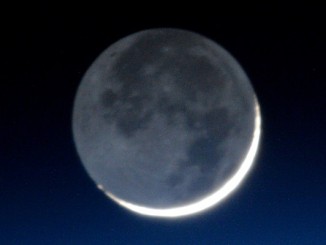European Space Agency astronaut Alexander Gerst snapped this spectacular view of the moon, Earth’s nearest neighbour and the next target for astronauts moving beyond low-Earth orbit, from his perch aboard the International Space Station. This week, ESA hosted a workshop in the Netherlands to discuss lunar resources and their role in sustainable space exploration. Learning how to extract oxygen and water for life support, producing propellants and building habitats and other structures using available resources will be critical to making such missions affordable, space planners say. ESA is meeting with industry officials, potential partners and space experts to explore “the technological readiness, commercial viability, legal status and international context for lunar resource use.”




